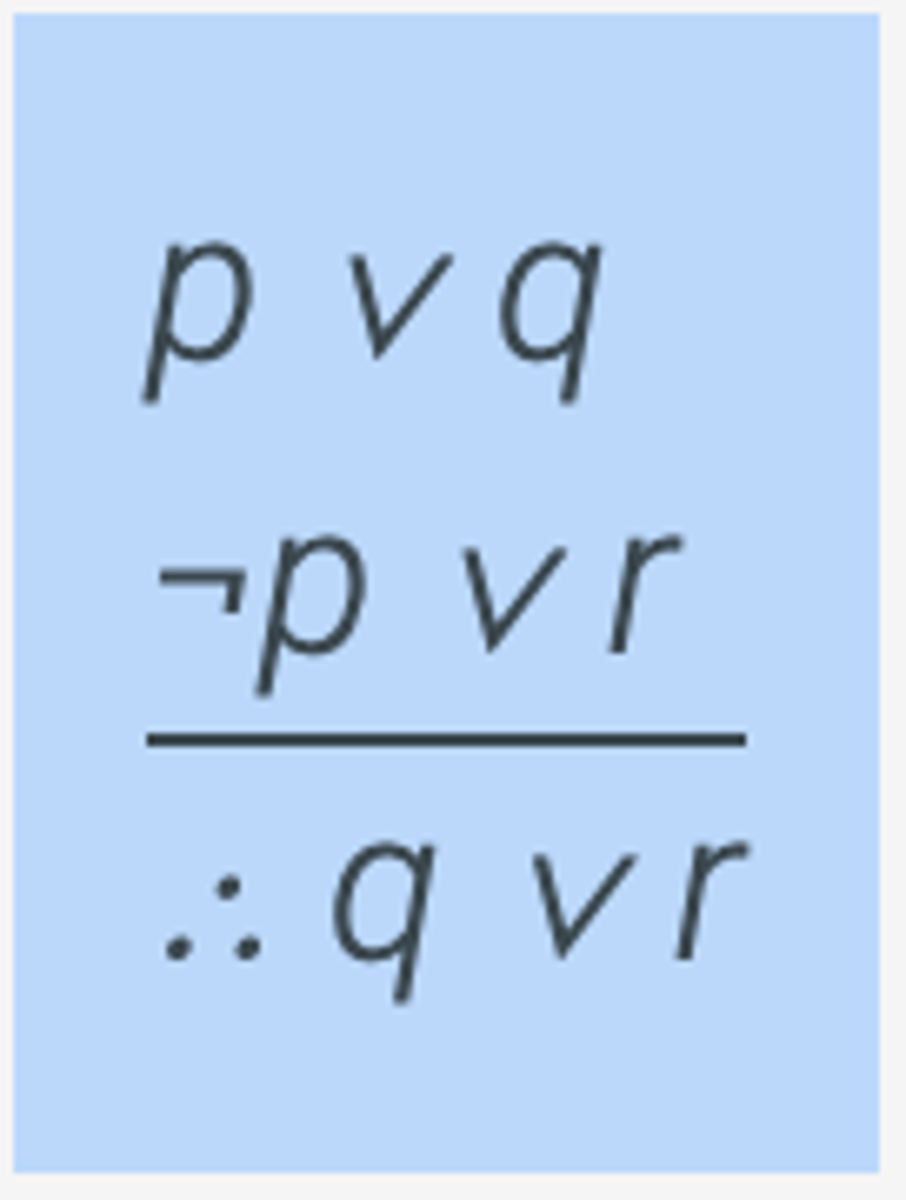C959 Discrete Mathematics I
1/75
There's no tags or description
Looks like no tags are added yet.
Name | Mastery | Learn | Test | Matching | Spaced |
|---|
No study sessions yet.
76 Terms
Conjunction
"and" - symbol ∧ - for conjunction to be true, both sides must be true, think multiplication, 1x1, 0x1, 0x0
Disjunction
"or" - symbol ∨ - for disjunction to be true, one side must be true (said another way, either side can be true). Also true when both sides are true. Only false when both sides are false. This is "inclusive or". Think addition, 0+1, 1+0,
Not
"not" - symbol ¬ - the opposite of the proposition
Inclusive "or"
Inclusive "or" OR - ∨ - means that either side can be true for the proposition to be true AND BOTH sides can be true for the proposition to be true.
2^n
where n is the number of variables, 2^n represents the number of possible outcomes or combinations.
Truth table set up
The first variable should be half of 2^n T's in a row and half 2^n F's in a row. The next variable would be half of the first variable T's in a row (if the first variable had 4 T's in a row, the second variable will have 2 T's in a row), etc and so on until the last variable alternates every time, TFTFTFTF.
exclusive "or"
Exclusive "or" XOR - ⊕ - means that the proposition is ONLY true when either side is true, BUT NOT when both sides are true.
Implication
p → q "Conditional Statement". If p, then q. OR p implies q. However, if hypothesis p is False, it DOES NOT tell us anything about the conclusion q. So, a False hypothesis P will still be True proposition truth value regardless of the Q.
Inverse
Negates the operands. p → q becomes ¬p → ¬q.
Converse
Switches the order of the operands. The converse of p → q is q → p.
Contrapositive
Switches the operands and negates them. p → q becomes ¬q → ¬p. Has the same truth values as p → q.
Bi-conditional
p ⇔ q "p if and only if q" or "p iff q". To be true, both propositions must share the same truth value, ie must be TT or FF.
equivalency
≡
Bi-conditional can also be written as a compound proposition
(p ⇔ q) ≡ (p → q) ∧ (q → p)
compound proposition order of operations
not, and, or, if then, if and only if. Symbols: ¬, ∧, ∨, →, ⇔
∧ propositional operator
and, both propositions must be true for true result or else result is false
¬ propositional operator
not, produces the opposite of the input proposition, true changes to false and vice versa
∨ propositional operator
or, either of the propositions must be true for the result to be true AND if both are true the result is true as well
→ propositional operator
implication p implies q, conditional, if hypothesis is true conclusion must be true, if the hypothesis is false the conclusion is true
↔︎ conditional operator
biconditional, if and only if, iff
propositional order of operations
¬, ∧, ∨, →, ⇔
Hypothesis of a compound proposition
If p, then q. P is the hypothesis, the If proposition
Conclusion of a compound proposition
If p, then q. Q is the conclusion, the Then proposition.
In the words of logic, the only way for a conditional statement to be false is
if the hypothesis is true and the conclusion is false
If the hypothesis is false, then
the conditional statement is true regardless of the truth value of the conclusion.
Translations of p → q
If p, q
q, if p
p implies q
p only if q
p is sufficient for q
q is necessary for p
The proposition p ↔ q is true when p and q _________ and is false _________.
have the same truth value, when p and q have different truth values
tautology
when a compound proposition is always true, p ∨ ¬p
contradiction
when a compound proposition is always false, p ∧ ¬p
logically equivalent
when two compound propositions have the same truth tables regardless of the values of their individual propositions,
¬p ∨ ¬q ≡ ¬(p ∧ q)
De Morgan's law, first version, distributing negation inside a parenthesized expression
¬(p ∨ q) ≡ (¬p ∧ ¬q)
De Morgan's law, second version, distributing negation inside a parenthesized expression
¬(p ∧ q) ≡ (¬p ∨ ¬q)
Idempotent Laws
p ∨ p ≡ p
p ∧ p ≡ p
Associative Laws
( p ∨ q ) ∨ r ≡ p ∨ ( q ∨ r )
( p ∧ q ) ∧ r ≡ p ∧ ( q ∧ r )
arrangement of parentheses does not matter
Commutative Laws
p ∨ q ≡ q ∨ p
p ∧ q ≡ q ∧ p
order does not matter
Distributive Laws
p ∨ ( q ∧ r ) ≡ ( p ∨ q ) ∧ ( p ∨ r )
p ∧ ( q ∨ r ) ≡ ( p ∧ q ) ∨ ( p ∧ r )
sign w first variable remains w first variable & sign inside parentheses ends up between sets of parentheses
Identity Laws
p ∨ F ≡ p, where F = False, contradiction
p ∧ T ≡ p, where T = True, tautology
Domination Laws
p ∧ F ≡ F, where F = False, contradiction
p ∨ T ≡ T, where T = True, tautology
Double negation law
¬¬p ≡ p
Complement Laws
p ∧ ¬p ≡ F, ¬T ≡ F, contradiction
p ∨ ¬p ≡ T, ¬F ≡ T, tautology
De Morgan's Laws
¬( p ∨ q ) ≡ ¬p ∧ ¬q
¬( p ∧ q ) ≡ ¬p ∨ ¬q
Absorption Laws
p ∨ (p ∧ q) ≡ p
p ∧ (p ∨ q) ≡ p
Conditional Identities
p → q ≡ ¬p ∨ q
p ⇔ q ≡ ( p → q ) ∧ ( q → p )
Atomic Statement
Can not be divided into smaller statements
Molecular statement
Can be divided into smaller statements
Existential Qualifier
∃ - "there exists" or "there is", true when P(x) is true for a single x in the domain, false when P(x) is false for EVERY x in the domain, ∃xP(x) ≡ P(x1) OR P(x2) ∨ P(x3), etc. Provide counter example when FALSE.
Universal Quantifier
∀ - "for all" or "every", true when P(x) is true for EVERY x in the domain, false when P(x) is false for a single x in the domain, ∀xP(x) ≡ P(x1) AND P(x2) ∧ P(x3), etc. Provide counter example when FALSE.
Base 2 factors
2^0=1(byte), 2^1=2, 2^2=4, 2^3=8(bit), 2^4=16, 2^5=32, 2^6=64, 2^7=128, 2^8=256, 2^9=512, 2^10=1024(KB), 2^11=2048, 2^12=4096, 2^20=1,048,576(MB), 2^30=1,073,741,824(GB), 2^40=1,099,511,627,776(TB), 2^50(PB), 2^60(EB)
Convert base2 to base8 (octal)
Group binary digits into groups of 3 and convert each group to 0-7
Convert base2 to base16 (hexadecimal)
Group binary digits into groups of 4 and convert each group to 0-15 (0-F) (A=10, B=11, C=12, D=13, E=14, F=15
3 parts of predicate logic
1. Variables - x, y, z, these are the subjects of statements
2. Predicates - a property the variable can have
3. Quantifiers - Universal quantifier ∀ (for all), existential quantifier ∃ (there exists)
P(x)
Propositional function, can become a proposition (and have a truth value) when variable is defined or bound by a quantifier.
U
The domain, the universe
Uniqueness Quantifier
∃!x P(x) means that P(x) is true for one and only one x in the universe of discourse.
DeMorgan's Laws for Quantifiers
¬∀x P(x) ≡ ∃x ¬ P(x)
¬∃x Q(x) ≡ ∀x ¬ Q(x)
Quantifiers (∀, ∃, ∃!) are applied ...
before logical operators
A variable in the predicate, P(x) is called a
free variable, it is not bound
The variable in the statement ∀x P(x) is called a
bound variable, because it is bound by the quantifier
∀x∀y M(x,y)
For every pair of x and y, M(x,y) is true
∃x∃y M(x,y)
There exists at least one pari of x and y such that M(x,y) is true
∃x∀y M(x,y)
There exists at least one x that pairs with ALL y, such that M(x,y) is true
∀x∃y M(x,y
For each x, there is at least one y, such that M(x,y) is true
¬∀x ∀y P(x, y) ≡
∃x ∃y ¬P(x, y), De Morgan's law w nested quantifiers
¬∀x ∃y P(x, y) ≡
∃x ∀y ¬P(x, y), De Morgan's law w nested quantifiers
¬∃x ∀y P(x, y) ≡
∀x ∃y ¬P(x, y), De Morgan's law w nested quantifiers
¬∃x ∃y P(x, y) ≡
∀x ∀y ¬P(x, y), De Morgan's law w nested quantifiers
A proposition is true or false whereas an argument is ...
valid or invalid
An argument is valid if all the premises are true AND ...
the conclusion is true. It is invalid otherwise.
Modus Ponens
((p -> q) ∧ p) -> q

Modus Tollens
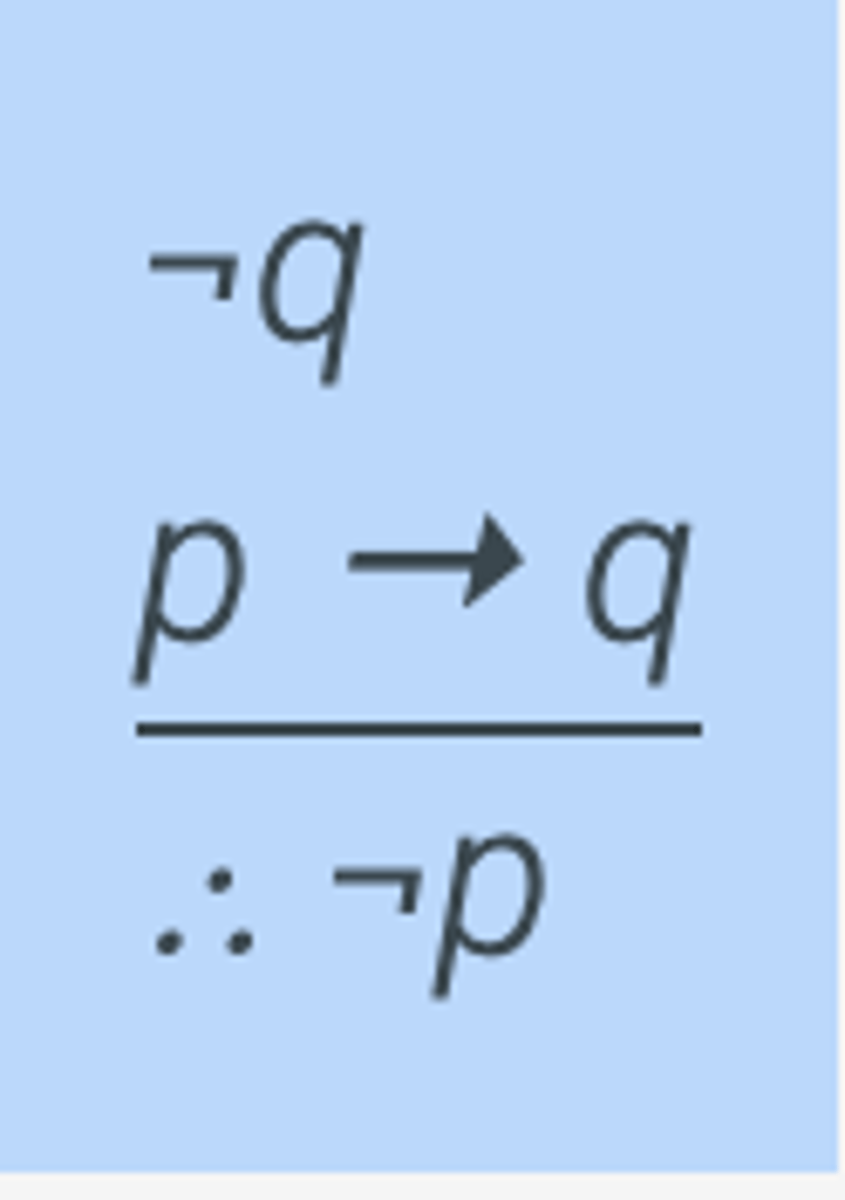
Addition
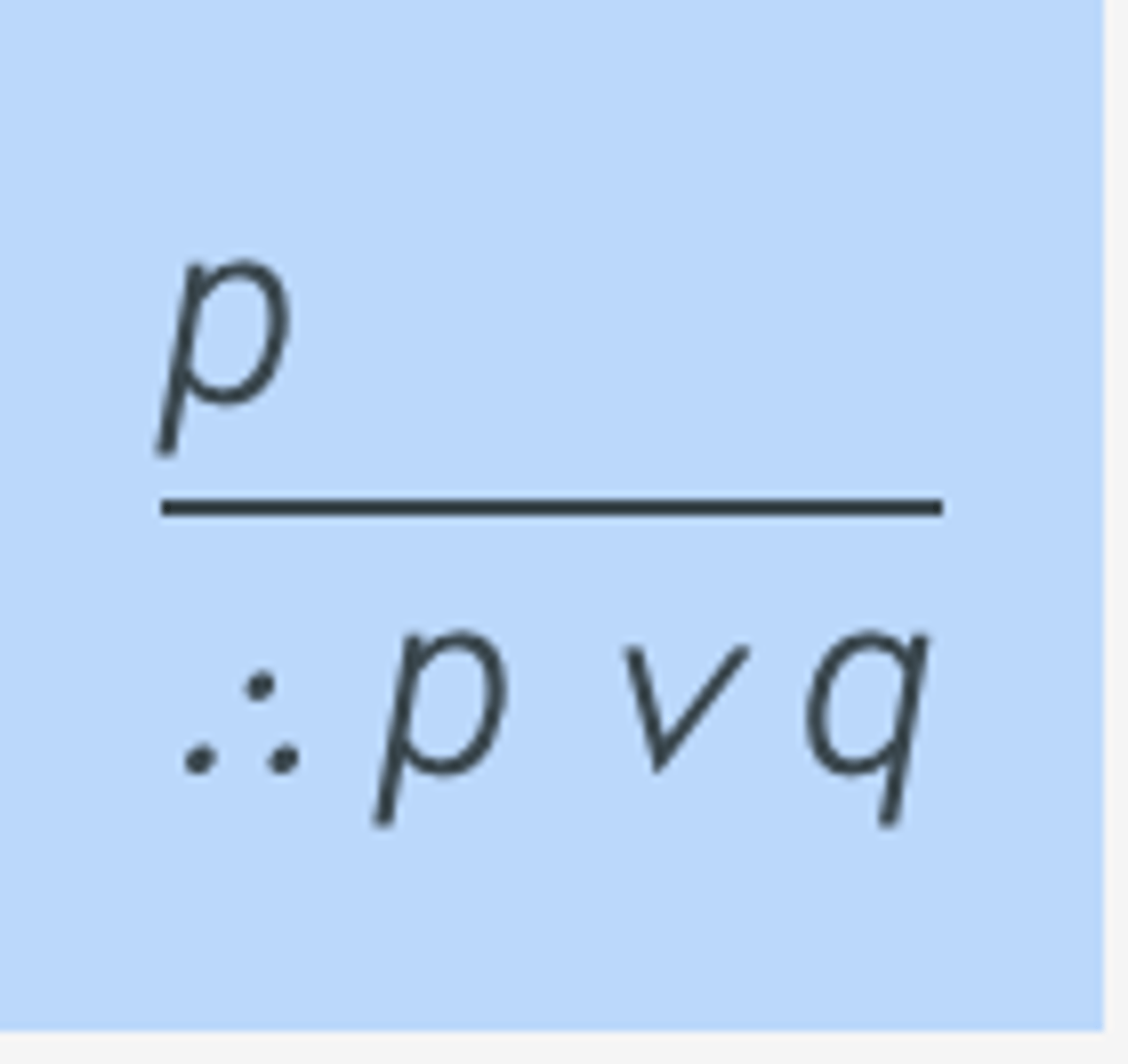
Simplification
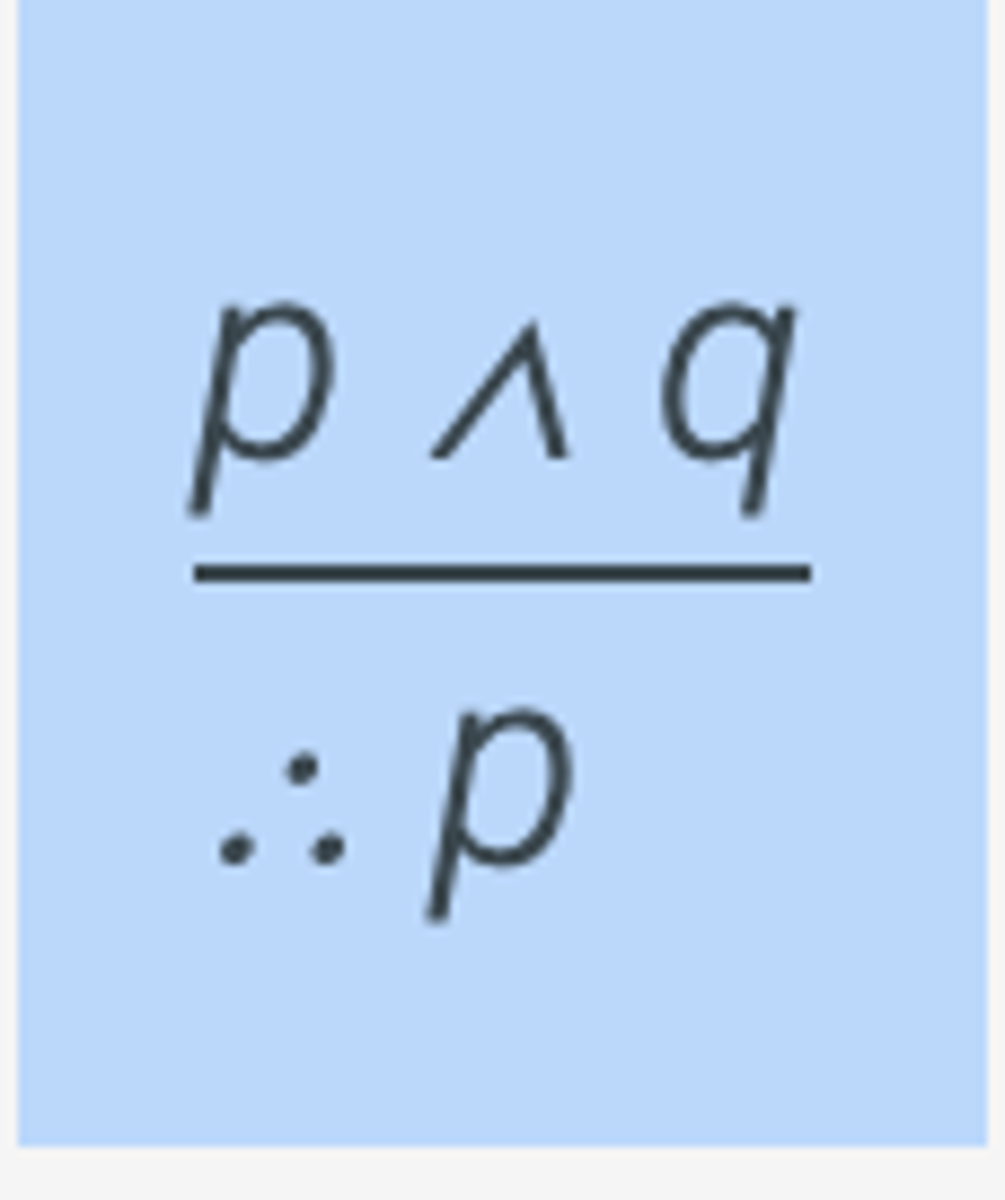
Conjunction
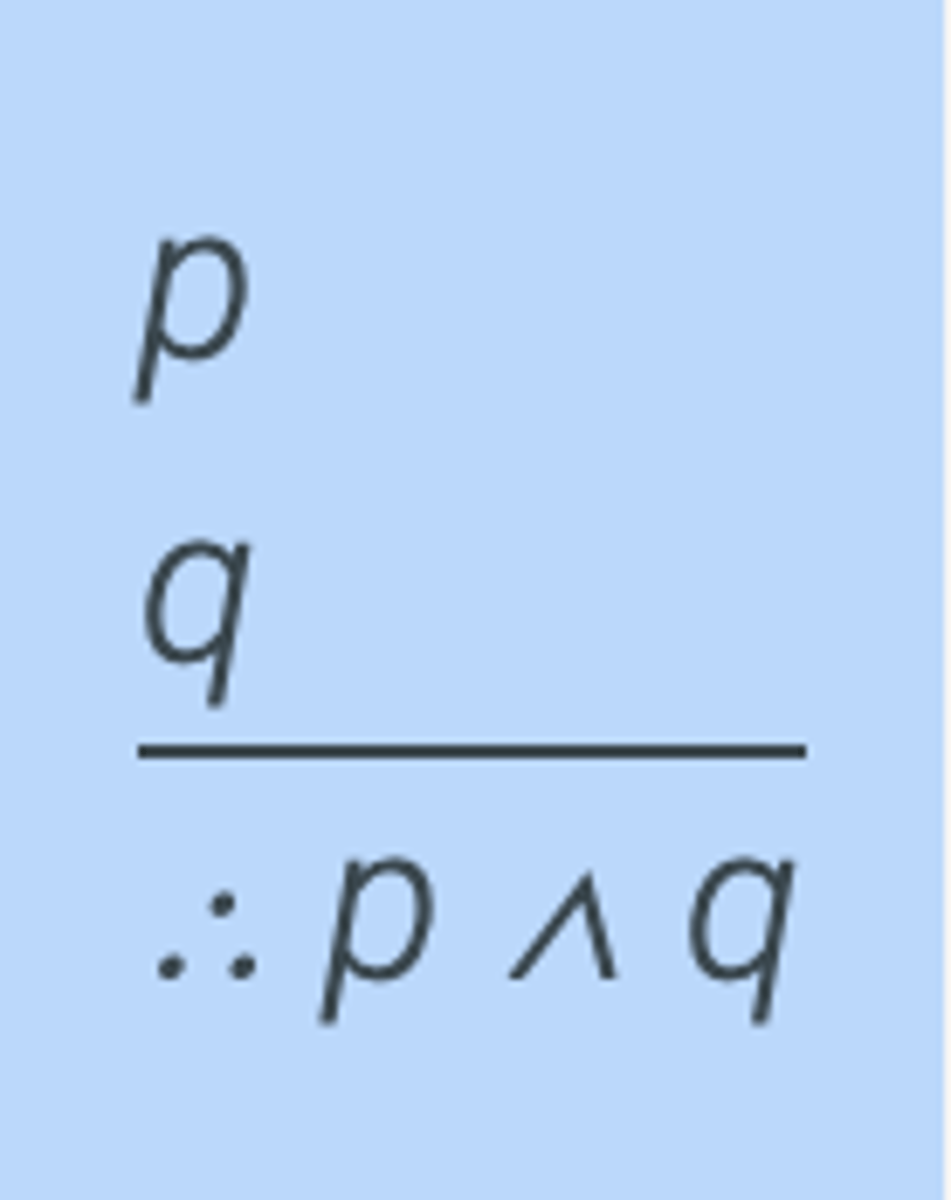
Hypothetical Syllogism
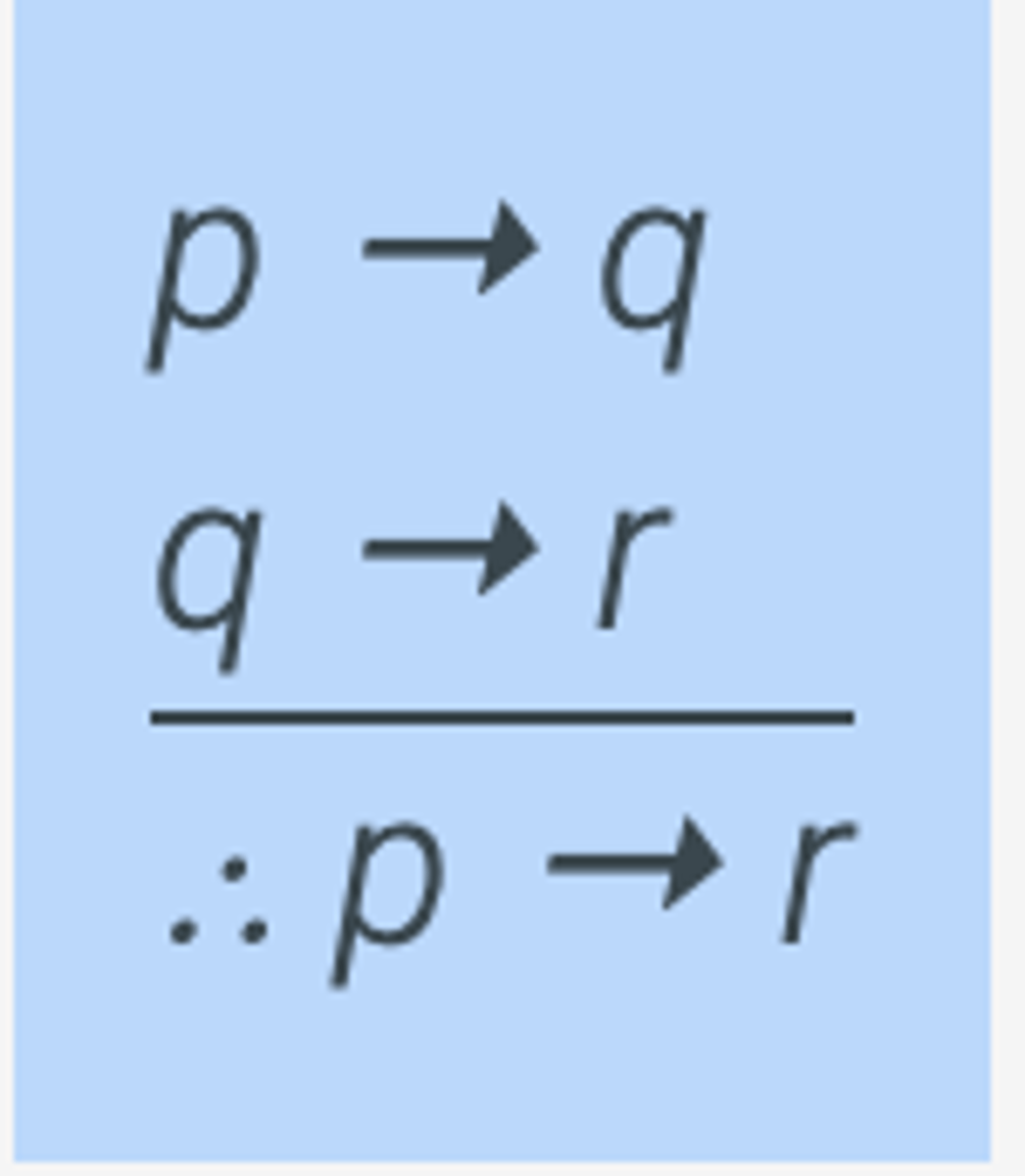
Disjunctive Syllogism
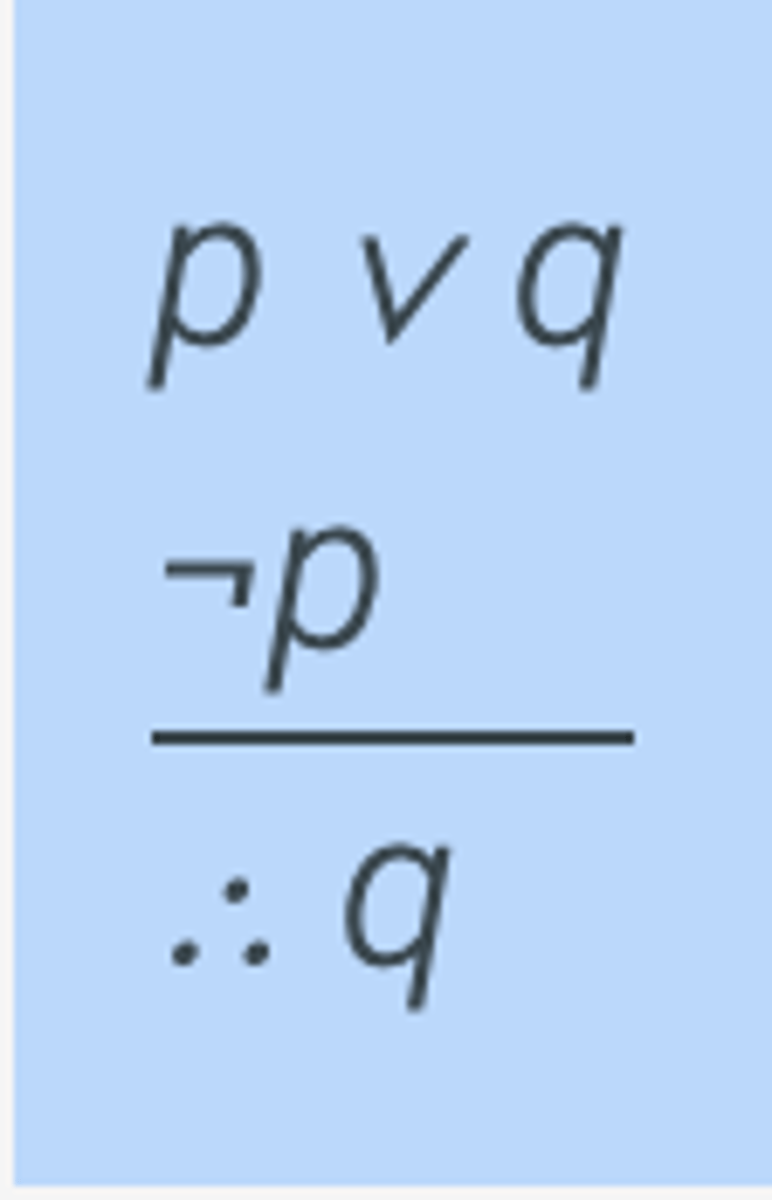
Resolution
